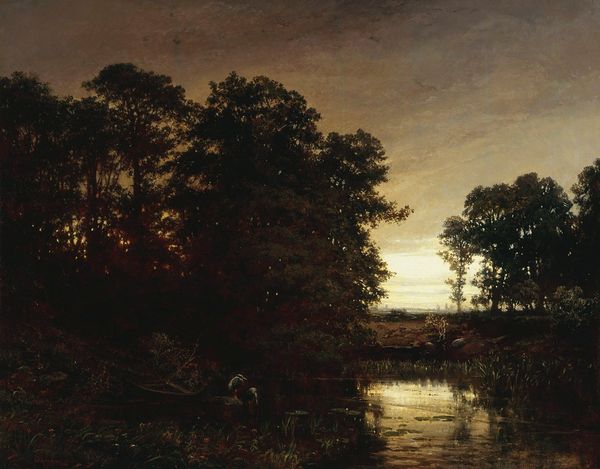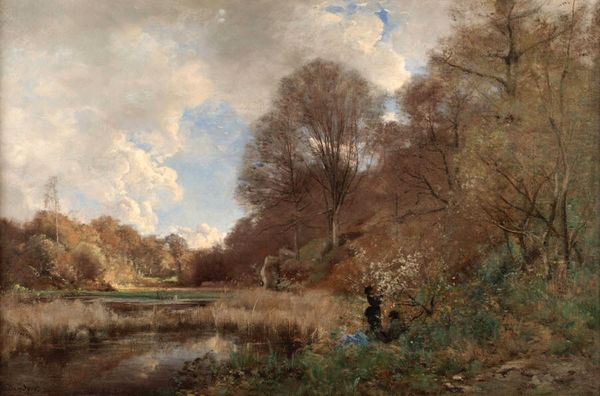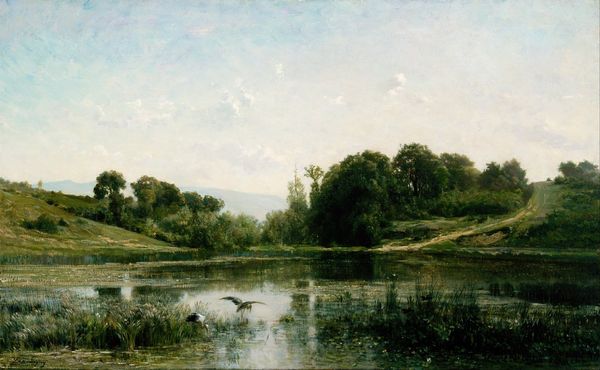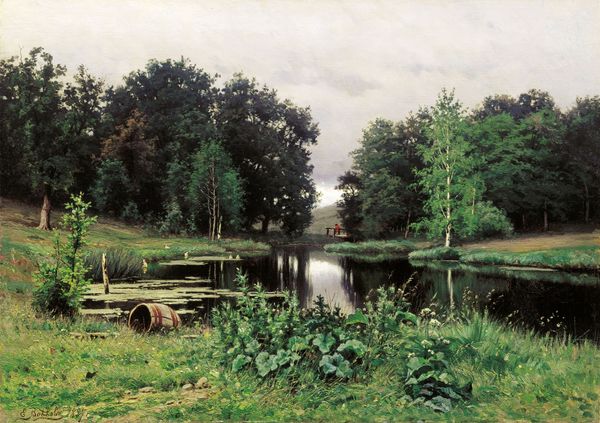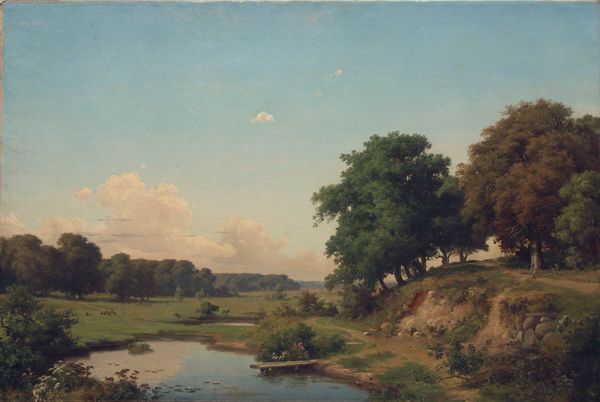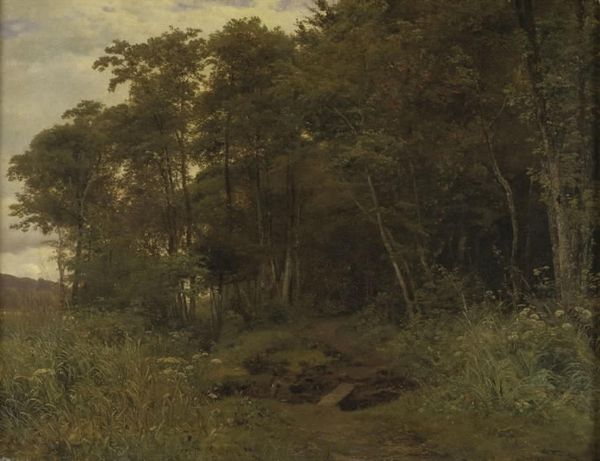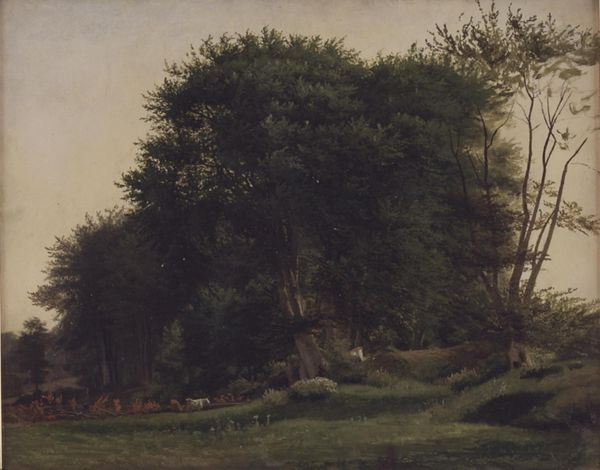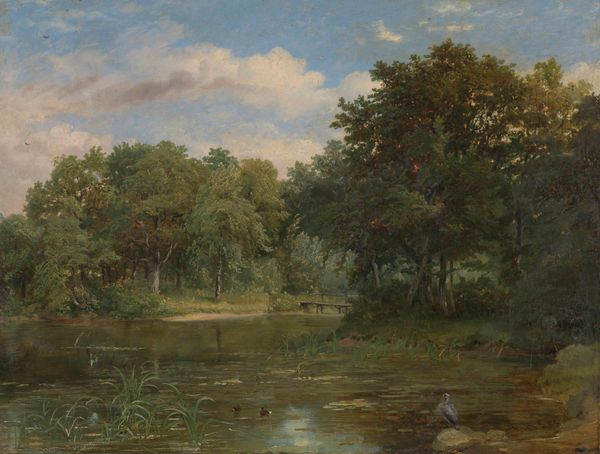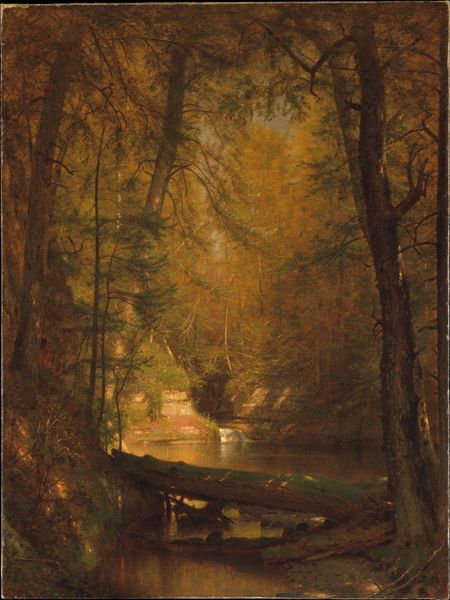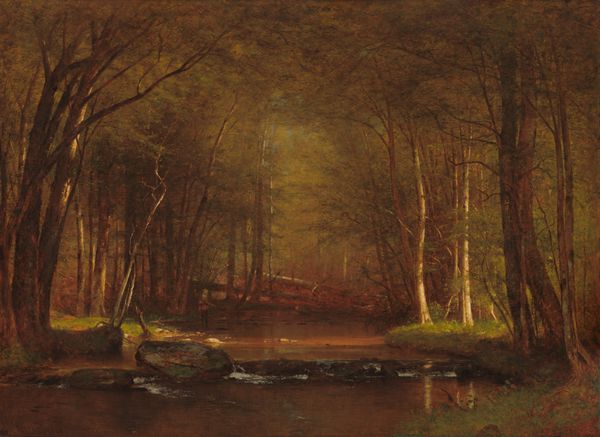
Dimensions: 38.5 cm (height) x 60 cm (width) (Netto), 54.4 cm (height) x 75.4 cm (width) x 6 cm (depth) (Brutto)
Curator: There's a wonderful sense of quietude in this painting. The tones are muted, soft, the kind of scene that just invites contemplation. Editor: Indeed. We’re looking at P.C. Skovgaard's "Aften ved Bondedammen i Hellebæk," created in 1858. Skovgaard, a key figure in Danish Golden Age painting, captured this scene en plein air, using oil paints to depict the landscape. What interests me is the rising popularity of landscape paintings during this time and who the consumer of this image was, as a stand in for a physical journey. Curator: Well, the brushstrokes themselves tell a story. You can almost feel the texture of the canvas beneath the layers of oil paint. The handling of the paint shows the artist's direct engagement with the scene. One has to consider the availability of pre-mixed colors as well and its relation to plein-air styles, along with how those material limitations, or opportunities, could define Skovgaard’s painting gestures. Editor: Precisely. Landscape painting offered viewers an opportunity to engage with an idealized image of Danish nationalism and local topography. This painting presents nature as a reflection of the Danish spirit, closely tied with romantic ideologies that shaped understandings of national identity during the 19th century, thus reinforcing specific interpretations through exhibition and artistic display. Curator: Look at the reflection on the water. The ripples aren’t just about representing the physical reality, but maybe an insight into the ephemeral and transient nature of life. I also consider the role this 'Bondedammen' actually served, what it represented in the cultural ecosystem that made the work possible? This pond at Hellebæk provided more than a painterly opportunity; the socioeconomics in that area are palpable. Editor: The artwork definitely serves as a visual signifier of the cultural construction of "Danishness." Skovgaard here reinforces notions of national romanticism and identity politics through his careful compositional decisions. Art institutions like SMK have continued to shape that identity, selecting particular stories for exhibition, but, of course, also allowing future interpretations such as ours. Curator: Right. The materiality gives it a presence, which transcends the specific history of its creation. Looking closer to his handling of trees on the far right corner, I consider if those particular, shorter brushstrokes were used to signal a younger forest. Or was that just how paint and a brush acted? I can never truly say. Editor: What I appreciate most is understanding how artistic vision, material resources, and historical context coalesce into such a potent and evocative representation of Denmark and how that representation informs us still. Curator: Indeed, pondering those links reveals deeper meanings that a first glance simply cannot capture.
Comments
No comments
Be the first to comment and join the conversation on the ultimate creative platform.
